Author of this article:Fiona
In 2025, when customer communication channels are increasingly fragmented, ”multi-channel support“ is no longer a ”bonus" for cross-border enterprises, but a just need for survival.Gartner research shows that, 76% of consumers around the world will interact with brands through at least 3 channels, of which 42% of customers abandon their purchases because the channel information is not synchronized (for example, after consulting on WhatsApp, they still need to repeat the description of the problem after going to Facebook).;Salesforce pointed out, For every 10% increase in cross-channel experience consistency, customer loyalty can increase by 23%. But the reality is that many small and medium-sized enterprises are still using the inefficient model of ”manually switching multiple platforms + Excel to record customer information“, falling into a vicious circle of ”the more channels, the worse the experience".
As a focus onMulti-channel customer supportThe smart platform,MixdeskFundamentally solved the core pain point of “channel fragmentation”. It is not a simple integration of communication portals, but through the full-link capability of ”data access + intelligent response + cultural adaptation", it transforms decentralized customer contacts into a unified experience closed loop. This article will analyze in depthMixdeskHow to reconstruct the multi-channel support process, combined with practical cases and practical guidelines, to prove why it can become the “ultimate tool for multi-channel customer support” for global enterprises.
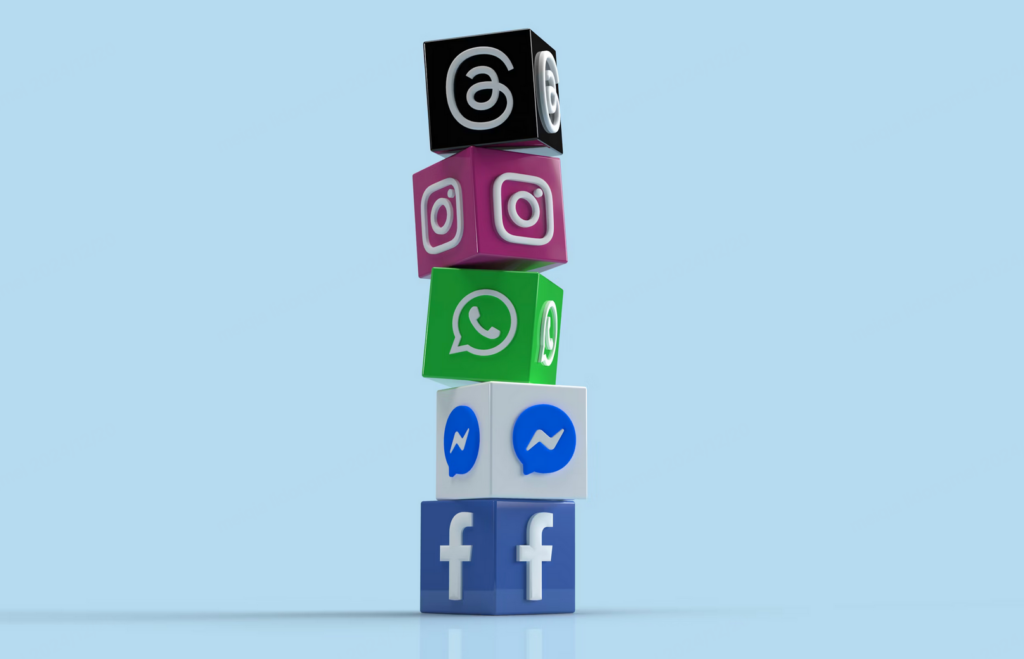
Mixdesk is an overseas multi-channel intelligent customer communication platform that can unify multiple channels such as Facebook, Instagram, WhatsApp, Line, Telegram, and Email to help companies communicate and serve customers. Mixdesk also supports AI employee functions, allowing enterprises to achieve more efficient automated customer service.
- 1. The core pain points of multi-channel customer service: Why “the more channels, the lower the efficiency”
- 1. Channel fragmentation leads to customer experience faults
- 2. Poor response time: insufficient manual coverage, “lost contact” during peak hours
- 3. Cultural and language barriers: multi-channel communication “stepping on thunder", localization fails
- 4. Data cannot be linked: personalized support is “unfounded”
- 2. Mixdesk's 5 core capabilities: the “ultimate solution” for multi-channel customer service
- 3. Mixdesk practical skills, painless realization of efficient landing and collaboration
- Fourth, the conclusion
1. The core pain points of multi-channel customer service: Why “the more channels, the lower the efficiency”
The essence of multi-channel support is “Customer-centered"Experience reconstruction, but the traditional operation model often turns “multi-channel” into “multi-burden". After investigating some cross-border companies, we found that the core pain points are concentrated in four dimensions. These problems have directly led to a decline in customer satisfaction and a surge in operating costs.
1. Channel fragmentation leads to customer experience faults
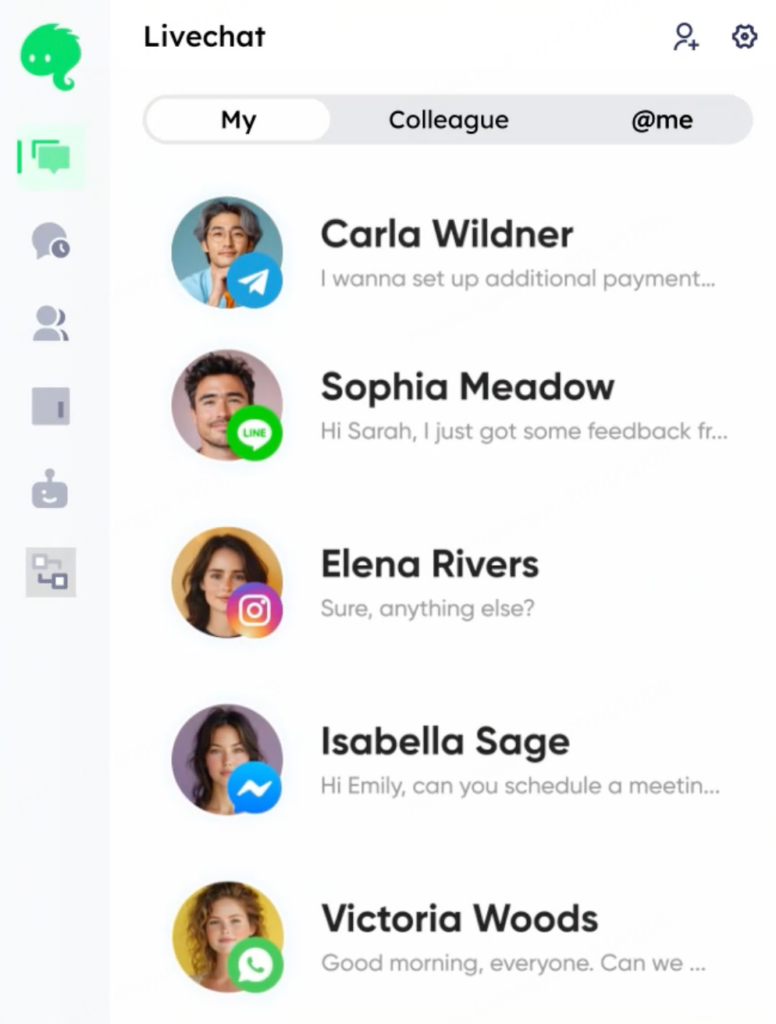
With the increase of customer touchpoints, companies often cannot effectively integrate data and information from different channels. Each customer may interact with the brand on multiple channels, resulting in customer information and interaction history scattered in different systems, and it is difficult for companies to obtain a complete view of their customers. Customers must repeat their problems or needs every time they interact, resulting in a decline in the customer experience.
For example: a cross-border e-commerce customer may see a product advertisement on Instagram→consult the size through WhatsApp→ place an order at an independent station →check the logistics by email→and finally feedback after-sales questions on Facebook. However, traditional tools cannot synchronize the information of these contacts. Customer service needs to switch repeatedly between the 5 platforms, and customers need to repeat “The XX product I bought, the order number XXX, the problem is XXX” every time.
2. Poor response time: insufficient manual coverage, “lost contact” during peak hours
Although multi-channel communication can improve customers' access to brands, it also brings efficiency challenges. Customers may initiate inquiries through different channels at the same time, and manual customer service needs to constantly switch between different applications and platforms, which slows down the response speed to customer questions and decreases customer satisfaction.
At the same time, multi-channel also means that the dispersion of consultation volume and the unpredictability of peaks cannot be covered by the traditional “manual agent + fixed working time” model. Even if multi-channel customer service is configured, it is difficult for manual response to ensure efficiency, which leads to poor timeliness and directly becomes a short experience.
The communication methods and needs between different channels are also different. In order to provide consistent service quality, enterprises must equip each channel with corresponding customer service personnel and provide them with adequate training. This not only increases the operating costs of the enterprise, but may also cause instability in the quality of service due to improper personnel scheduling.
3. Cultural and language barriers: multi-channel communication “stepping on thunder", localization fails
For cross-border e-commerce companies, language and cultural differences make customer support more complicated. Customers want to obtain services in the language and cultural background they are familiar with, and this requires companies not only to provide multilingual support, but also to be able to adapt to the cultural differences of different markets. While multichannel often means “multi-market and multi-language", traditional tools can only solve “text translation” and cannot cope with cultural context differences. As a result, ”hidden mistakes“ are magnified in multi-channel scenarios-the communication style and cultural taboos of each channel are different, and it is difficult to fully cover them manually, which ultimately causes ”multi-channel“ to become ”multi-risk".
4. Data cannot be linked: personalized support is “unfounded”
The core value of multichannel should have been “more comprehensive customer insight”, but traditional tools cannot integrate the data of each platform into a unified portrait: customer service cannot see the customer's browsing history on independent stations, and it is impossible to know which product the customer has followed; it is difficult to provide targeted information without understanding the customer's historical complaints on Facebook.solution.
These challenges put forward higher requirements for traditional customer service systems, and a solution that can efficiently integrate multiple channels and improve the customer experience is needed.MixdeskIt is the ultimate tool designed to solve these problems.
2. Mixdesk's 5 core capabilities: the “ultimate solution” for multi-channel customer service
MixdeskIt is a comprehensive AI-driven omni-channel customer service platform designed to help enterprises achieve seamless customer support through intelligent technology. It uses deep learning and artificial intelligence technology to enable companies to smoothly interact with customers between different channels and provide each customer with a personalized service experience. Through “technical reconstruction + process optimization", multi-channel support has been changed from “burden” to “advantage”. Its core capabilities revolve around the three goals of ”integrated experience, intelligent response, and localized adaptation", directly hitting the above four pain points.
1. Omni-channel unified workbench

MixdeskThe core breakthrough is to break down channel data barriers and realize the seamless integration of mainstream customer contacts. Its powerfulOmni-channel integration capabilitiesSupport the centralized management of information from different channels, allowing enterprises to view all customer interaction records on a unified interface.MixdeskNot only supports traditional customer service channels (such as email, website chat, etc.), but also seamlessly integrates with social media (such as independent stations, Facebook, Instagram, WhatsApp, Telegram, etc.). No matter which channel the customer communicates with the company through,,MixdeskIt can automatically record the content of each interaction and combine it with the historical data of the customer to form a complete view of the customer.
This kind of integration not only helps to improve the efficiency of customer service, but also reduces the trouble of customers repeatedly explaining problems between multiple channels and improves customer satisfaction.
2. Omni-channel customer service and unified data management
The core of multichannel is “Data linkage”.MixdeskIt not only supports the integration of major social platforms, but also seamlessly connects with the company's existing CRM systems, marketing tools, and sales platforms to help companies realize centralized data management. Customer interactions on any channel will be automatically recorded in the system and associated with the customer's basic information, purchase history, preferences and other data. By automatically integrating customer data (browsing history, consultation content, order information, preference tags) scattered in various channels, dynamically updated customer portraits are generated.
This kind ofData drivenThe personalization is exactly what traditional multi-channel tools cannot achieve.
3. Multi-modal intelligent response
“Full scene coverage” of pictures, voice, and text. Multi-channel communication has long surpassed "words”,MixdeskofMulti-modal interaction abilitySupport customers to express their needs in the “most natural way” without the need to adapt to tools:
- Picture recognition: The customer sends screenshots of product failures (such as damaged clothes, and the error reporting interface of home appliances), and the system automatically recognizes the product model and problem type, and directly pushes the solution.;
- Speech recognition: Support real-time text-to-text and semantic understanding of dozens of languages, even if it is a mixed expression of “Malay mixed with English” for Southeast Asian customers, it can be accurately analyzed;
- Smart speech recommendation: Based on channel characteristics and customer portraits, the system automatically recommends suitable reply techniques.
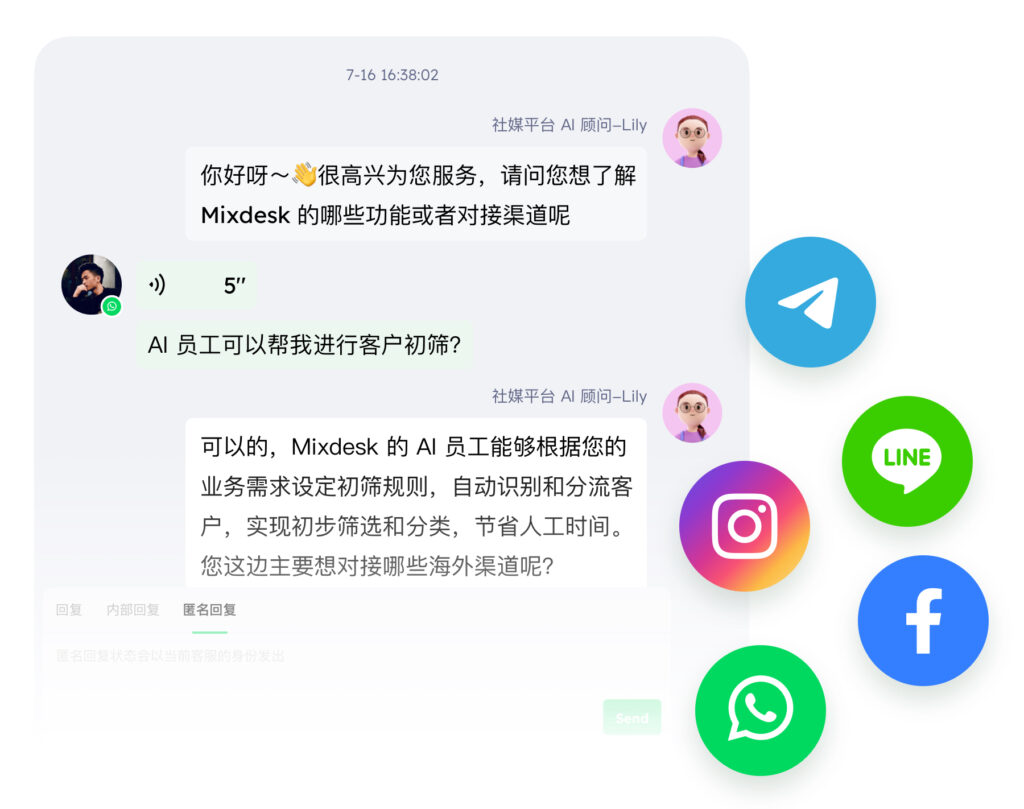
4. Multilingual and cultural adaptation
In the context of globalization,MixdeskSupport real-time translation in dozens of languages to help companies overcome language barriers and achieve global customer support. No matter which country or region the customer comes from,MixdeskCan be automatically switched according to the customer's language, and personalized adjustments can be made according to the customer's cultural background.
The “localization" supported by multiple channels is not just language translation, but in-depth adaptation to the cultural context of different regions. Enterprises can use Mixdesk's background API interface to connect their own cultural knowledge base to the system for training AI. In this way, AI can not only understand the customer's language, but also automatically adjust service tactics and strategies according to the cultural characteristics and communication habits of the customer's region, avoid the use of expressions that may cause misunderstandings or discomfort, and truly achieve cross-cultural high-quality communication.
This kind ofMultilingual and cultural adaptability, so thatMixdeskBecome an ideal choice for cross-border e-commerce and international brands.
5. AI automation + manual collaboration: Balance "efficiency” and "temperature”
The ultimate goal of multi-channel support is “efficiency and temperature coexist”,MixdeskThrough intelligent automation + manual collaboration, a balance between the two is achieved:
- AI automation processing standardization requirements: For high-frequency issues such as "logistics inquiry”“ "Order confirmation”“ "FREQUENTLY asked questions", the system automatically triggers the process to handle 80% of standardized inquiries.;
- Manually focus on complex needs: When the AI detects that the customer is emotionally excited or the problem is beyond its capabilities, it will transfer labor and synchronize the omni-channel history-customer service can quickly intervene without the customer repeating the description.;
- AI assisted labor: During manual reception, the system recommends words, key information about customer portraits, and historical solutions in real time to help customer service improve the quality of response.
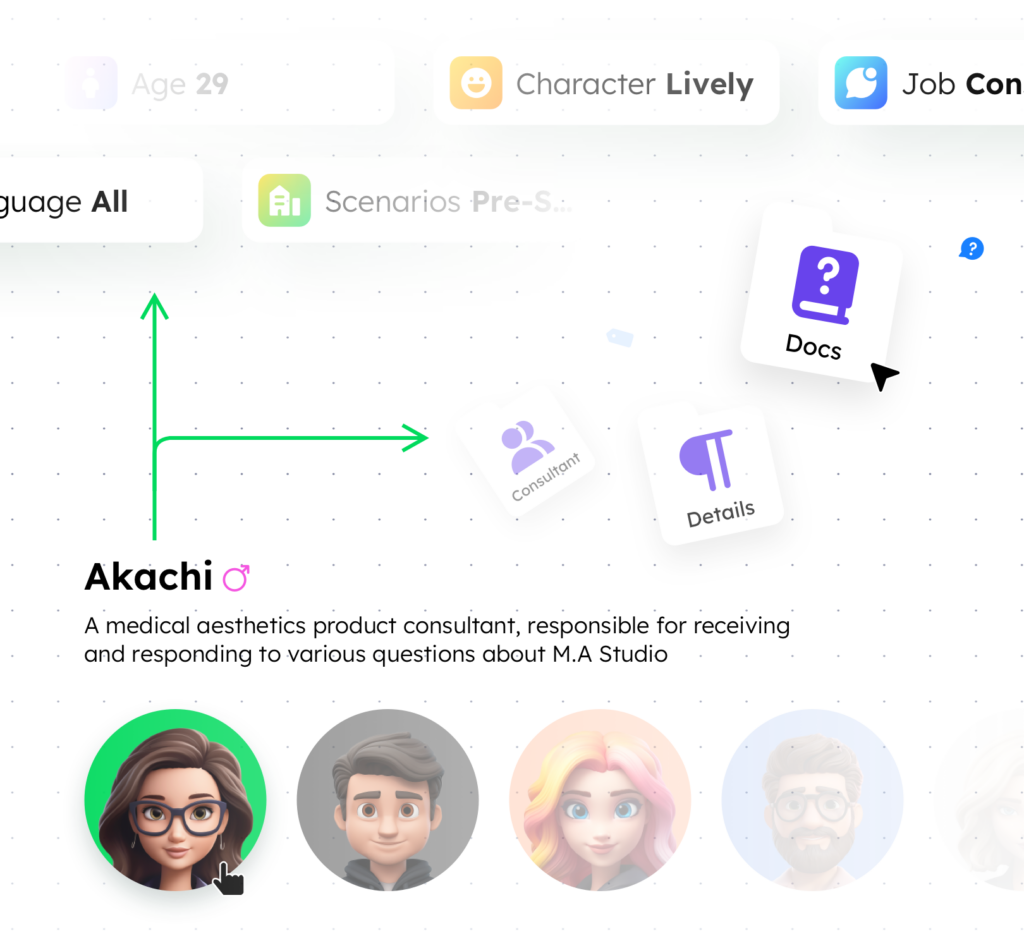
MixdeskThe intelligent routing system can also automatically assign problems to the most suitable customer service personnel based on the urgency of the problem, the customer's historical record and service level. This not only improves the response speed of customer service, but also ensures the quality of service.
AI technology isMixdeskA highlight of. Through natural language processing and machine learning technology,MixdeskBe able to understand customer needs and give intelligent responses. When a customer sends a question through any channel,MixdeskIt will automatically analyze the customer's intentions and automatically provide answers based on pre-set rules and knowledge base. For complex questions, the system will intelligently transfer them to manual customer service to ensure that customer questions are answered in a timely and accurate manner.
There are many multi-channel tools on the market, butMixdeskThe advantage of differentiation lies in “deep integration” rather than “simple superposition”. By comparing mainstream tools, its core competitiveness is clear at a glance:
| Comparative dimensions | Mixdesk | Ordinary multi-channel tools |
| AI+ artificial collaboration | Seamless transfer + AI-assisted speech, support emotion recognition | Only basic automatic reply, no manual collaboration function |
| Multi-modal interaction support | Full support for pictures, voice, and text, and dozens of languages are recognized | Only text is supported, and the recognition accuracy of small languages is low |
| Hands-on operability | The interface is simple and intuitive, the operation is simple, and it can be easily started without cumbersome training and configuration. | The page is complex, difficult to operate, and not easy to get started |
| Cross-border compliance support | Comply with global privacy regulations such as GDPR and PDPA | High cross-border risk |
| Number of supported channels | Multi-channel (including cross-border core channels such as WhatsApp and independent stations) | 2-3 (insufficient cross-border coverage) |
| Customer data integration capabilities | Automatically weave omni-channel data to generate 360-degree portraits | Only part of the channel data is integrated, there is no unified portrait |
3. Mixdesk practical skills, painless realization of efficient landing and collaboration
The core advantage of Mixdesk lies in “low threshold deployment + high adaptability”, which can quickly open up customer service and marketing processes without complex technical operations. The following three practical skills, combined with its core functional design, help enterprises gradually release the value of tools from basic configuration to in-depth application:
Skill 1: Efficiently complete channel access and basic configuration, and start multi-platform management in 3 minutes
For cross-border enterprises, the fragmentation of customer service channels is the biggest management problem. Messages from different platforms are often scattered in their respective back offices, and the customer service team needs to switch interfaces frequently, which is not only inefficient, but also easy to miss key information. With Mixdesk's "zero technology threshold", non-technical personnel can also get started quickly. The core goal is to solve the pain point of “multi-platform message dispersion”.:
- Complete multi-channel access in 3 minutes: No need for the support of the development team, through the background visual operation, you can quickly access mainstream communication channels such as Facebook, WhatsApp, and independent stations. After access, customer messages from all platforms will be aggregated into a unified Mixdesk workbench, and omni-channel conversations can be managed with one click without switching multiple tools. At the same time, companies can view and reply to Facebook dynamic comments directly in the background to avoid missing potential inquiries on social platforms, greatly simplifying the workflow of “multi-platform stalking”.
- Configure basic functions on demand: Set up standardized communication modules according to business needs, including:
- Basic interaction settings: custom welcome words (such as brand greetings triggered by the first consultation), customer service evaluation system (you can quickly score after the customer dialogue), customer labels (marked by dimensions such as "customer source”, "Consultation type”, and "purchase stage” to facilitate follow-up), and quick replies, Shortcut buttons (such as ”click to check logistics“, ”view after-sales policy" and other fixed options to reduce repeated input);
- Contact management: unified archiving of customer information from all channels, support for screening customer groups by label, and pave the way for follow-up accurate communication and proactive marketing;
- Intelligent permission layering to achieve efficient team collaboration: Group manual customer service according to team roles (customer service, supervisor, operations), and configure differentiated permissions and workbench views. Ensure that each role performs its own duties and collaborates more efficiently. ——For example, ordinary customer service can only view assigned conversations, supervisors can view team-wide data and session records, and operations can manage customer tags and quick replies to avoid confusion of authority and improve collaboration efficiency.;
- Access to own system data: If the enterprise already has an ERP system, a logistics system, etc., the access can be completed through the API interface of the Mixdesk background, allowing AI to directly call internal data during the dialogue, and automatically reply to logistics progress, order details and other information based on customer data.
This combination of ”fast access + flexible setup" not only meets the needs of start-up sellers to get started quickly, but also supports the complex data management scenarios of mature sellers and helps enterprises achieve stable and efficient operations in multi-channel customer service.
Skill 2: Combine AI to build a 7×24-hour response system
Mixdesk deeply integrates top-level big models such as ChatGPT and DeepSeek, so companies can create exclusive AI service person designs based on business goals. Whether it is pre-sales product recommendations or after-sales questions and answers, AI can be online continuously for 7×24 hours, providing customers with accurate and high-quality answers in the first time. Mixdesk's AI capabilities and automation functions are deeply coordinated. The core is to use technology to undertake “standardized requirements” and allow manual customer service to focus on high-value communication.:
- AI employees: customize human settings to achieve 24/7 automated services
As a mature solution in the field of online customer service, Mixdesk integrates top-level big models such as ChatGPT and Deepseek to support enterprises to customize AI human settings and service goals based on business scenarios-for example, set up a "enthusiastic and lively" "pre-sales AI" to guide potential customers to retain capital, or a "patient and accurate" "E-commerce customer service AI ”focuses on answering questions such as logistics inquiries and order confirmations. AI employees can be online 7×24 hours a day, responding to customer needs quickly and accurately, and can not only undertake automated customer service support, but also assist in marketing and customer acquisition (such as answering product selling points, guiding customers to place orders, and guiding customers to retain capital).
- Automated workflow: combine quick response with AI employees to reduce repetitive work
Enterprises can customize rules for high-frequency business scenarios, combine basic quick response with AI capabilities, and build a full-process automated response logic. For example, when a customer consults through WhatsApp for the first time, the system can automatically trigger a welcome message in the corresponding language based on the customer's IP and other information, and automatically mark the customer's source (Facebook ads, Google ads, organic traffic, etc.). If the customer asks further standardized questions (such as “free shipping threshold"”, AI can directly call the preset quick reply to complete the answer; when the customer enters “Logistics + order number”, the system will automatically recognize and push the logistics information; when the AI recognizes that the customer has a clear purchase intention, it will automatically sendThe conversation is transferred to the human customer service to ensure that every potential business opportunity will not be lost. Truly realize the efficient model of "automatically undertaking basic needs and manually focusing on complex services".
This combination of AI and automation allows the customer service team to focus on more complex and valuable customer needs, rather than being consumed by repetitive work. For cross-border enterprises, this “human-computer collaboration” model is becoming a core means to improve efficiency and experience.
Mixdesk
AI Agent
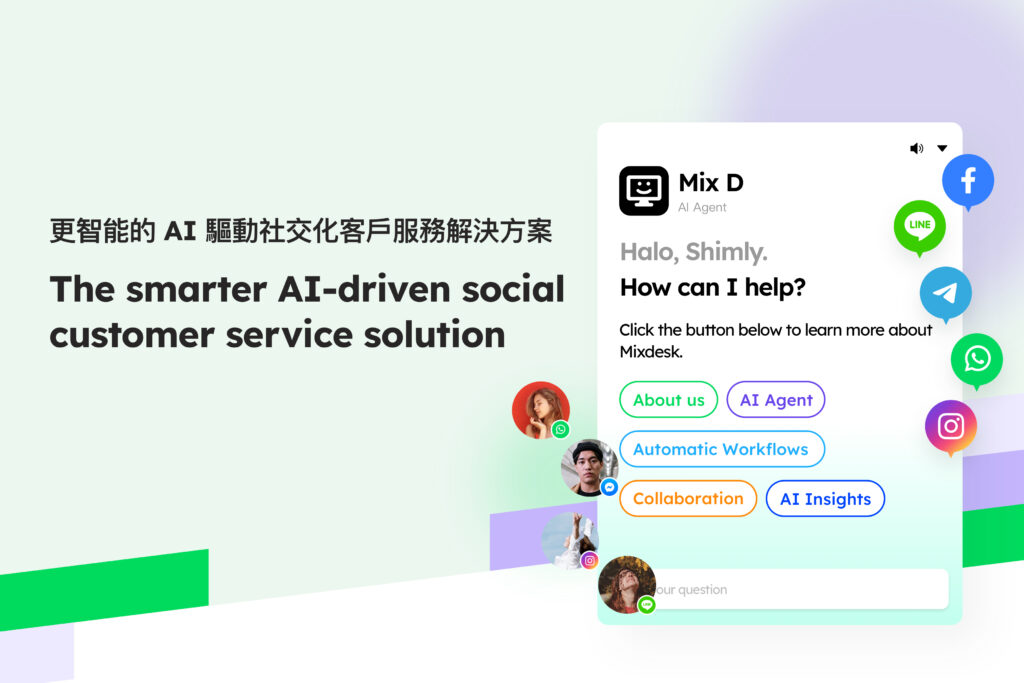
Skill three: Simultaneously realize active marketing and data insight
In the perception of most companies, customer service is just a tool for “passively responding to customers”. But in the logic of Mixdesk, the customer service system can also become an important entry point for marketing and growth.
Mixdesk's one-click mass distribution function allows companies to actively reach potential customers through channels such as WhatsApp, pushing promotional information, holiday greetings or reminders of new products on the shelves. This approach can not only increase customer contacts, but also effectively stimulate the willingness of potential customers to buy, and help companies transform customer service scenarios into growth opportunities. Unlike traditional cold-start marketing, active marketing triggered by the customer service system is more accurate and efficient.
- Active marketing: one-click mass distribution to activate potential customers
For settled customer groups (such as consulting customers who have not placed an order or historical repurchases), the background “marketing” function can be used to send targeted and regular mass push event notifications, new product information or exclusive benefits, without the need for additional marketing tools, you can complete the activation of potential customers in the customer service scenario.;
- Data insight: view core indicators in real time to optimize service and marketing effectiveness
The data insight capabilities provided by Mixdesk can help companies continuously optimize multi-channel operations. There are built-in reports and data dashboards in the background, and key data (number of effective conversations, average response time and online time, customer service praise rate) are clear at a glance. Based on this data, companies can continuously adjust their customer service strategies. ——For example, judge the peak customer consultation hours through the “effective number of conversations” and allocate customer service resources in a timely manner; analyze the shortcomings of customer service tactics through the “Praise rate” to optimize communication strategies; evaluate the response efficiency of AI and labor through the “Average online time” to provide data support for subsequent process optimization. For example, when the satisfaction of a certain channel is found to be low, the team can combine Mixdesk's AI data insights to analyze whether there are communication problems caused by cultural differences, and then optimize speech skills or localization strategies.
With Mixdesk, companies can maintain a consistent and high-quality customer experience in multiple channels, truly turning customer service into a growth engine for customer relationships.
Fourth, the conclusion
With the continuous growth of cross-border e-commerce and global business, companies need to deal with increasingly complex customer service challenges.MixdeskAs an AI-driven multi-channel customer service platform, it relies on its strong integration capabilities, intelligent functions and globalization support to help enterprises provide efficient and personalized customer service. It can also optimize services through data analysis and intelligent technology, improve customer satisfaction, and stand out in the fierce market competition.
MixdeskThe value lies not only in “current channel integration”, but also in “future experience evolution”: its continuous iteration of AI prediction engine, privacy computing technology, and cross-platform data security capabilities are paving the way for the next stage of multi-channel support. For cross-border companies, chooseMixdeskIt is not only the introduction of a tool, but also the construction of a “customer-centric” multi-channel experience system-this is the key to building trust and winning competition in the global market.
For companies that want to improve the customer experience, enhance brand loyalty, and drive business growth,MixdeskIt is undoubtedly an ideal choice.
chooseMixdesk, Open a new era of omni-channel customer support and achieve a better brand future.

